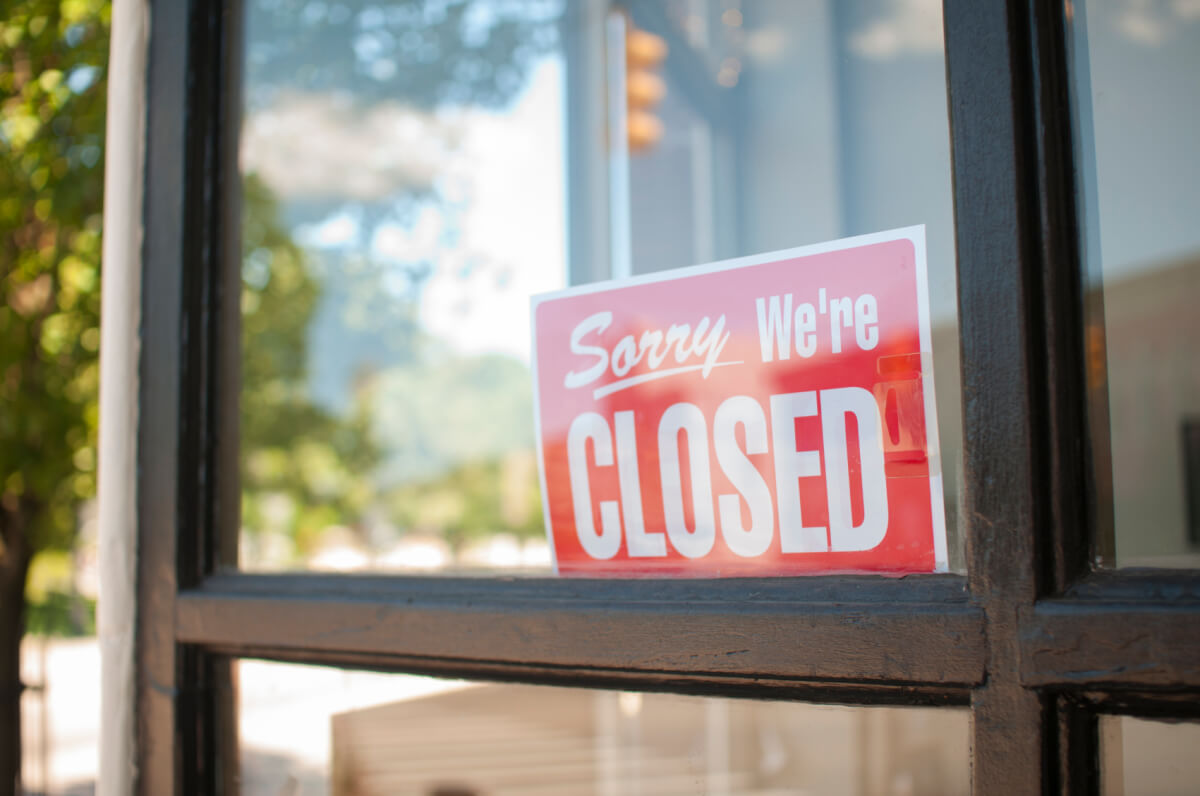Whether due to natural disaster, fire, or another unforeseen event, businesses sometimes must suspend their operations temporarily—for days, weeks or possibly even months. A temporary closure of even a few days can be devastating to a business’s viability, especially if the business doesn’t have a plan for how to deal with it.
In fact, according to the Federal Emergency Management Agency (FEMA), about 40 percent of businesses don’t reopen after a disaster.
And the risk of a natural disaster or another emergency situation isn’t as rare as you might think. “Risk is something that is happening everywhere,” Mark Norton, member services director of Agility Recovery Services said, according to CNBC. “No one can really fly by that excuse that disasters don’t happen here. Even if they haven’t happened in the last two to three years, that doesn’t mean that going forward you don’t need to be thinking about these risks and threats.”
While an unexpected closure can drastically harm a business, it doesn’t have to: Businesses that plan ahead for how they will cope with a temporary closure of their operations can greatly reduce the potential financial and reputational harm.
1. Assess the Potential Damage
An important first step is to understand the impact—financial or otherwise—that a short or prolonged closure would have on your business. The exact effects likely depend on the reason behind the closure: Suspending operations because of a fire would probably engender more sympathy—and thus support—from your customers than, say, a closure due to a data breach that compromises customers’ private information. So it’s a good idea to think about the various risks specific to your business. Factors to consider include:
- How much revenue does the business generate in the typical day or week? How much income then would the business stand to lose if it needed to close for a month or two? How about six months?
- How would customers react to a closure? Would they be frustrated and bring their business elsewhere, or will they likely return immediately once the business reopens?
- What ongoing costs (such as rent, utilities and employee wages and benefits) will the business continue to incur despite not being open?
- What extra costs could the business have to pay due to a specific event that forces a closure (such as cleanup costs from a storm or a data breach)?
2. Build a Rainy Day Fund
Every business owner should have money saved in case of unexpected costs or to help them survive a tough economic period or an unexpected event that hinders their ability to generate income. Experts typically recommend business owners keep at least three to six months’ worth of expenses as emergency savings.
Beyond emergency funds, business owners should also consider getting coverage that protects their financial viability in case of a closure. Business income protection coverage bridges the gap and helps a business cover its bills, payroll and other expenses. The coverage can be tailored to the unique risks of the business and owners can often receive their funds within 12 hours after a business interruption event occurs. For example, a business can get coverage for an income loss resulting from an interruption to the cloud service that stores its data or if the power goes out after a storm. A restaurant can get protection in case it must close because its refrigeration system stops working.
3. Create a Game Plan
Determine how you will react if your business has to close temporarily. For example, what will happen to your customers? Will they panic because they rely on your business for their own operations? Will you have to stop serving them completely, or would you be able to offer them limited support?
Consider how you can help your customers deal with your closure in a way that causes more long-term loyalty toward your business. You certainly don’t want to risk them going elsewhere and never returning once your business reopens.
Be sure to review your insurance policies and have the right coverage in place to cover the key risks your business faces. Also, keep contact information in an offsite location of the key people you will need to call in the event of an emergency.
Also consider:
- Who is responsible for communicating with customers about the closure? And how will you communicate? Will you call them or email them?
- What steps will you take to get the business up and running again as quickly as possible? Perhaps you can operate your business from a remote location. Put together a checklist of things you will need to do—and people you will need to call—to help you resume operations after an emergency.
- In case of a natural disaster or fire, how will you access your business records and data if you’re unable to access the facilities? You will want to make sure, for instance, that you have a strong data backup system in place and perhaps store your records on the cloud so they can be accessed from anywhere.
Always Be Ready
It’s important that you and any key employees are ready to execute your emergency plans. Talk with your key employees about who is responsible for what in case of a natural disaster, data breach or other event. Make sure those employees know how to access the information they will need to promptly respond to an emergency, such as key phone numbers and access to key documents.
Review your plan at least once a year to ensure it’s up-to-date.
Remember that the best way to reduce the negative impact of an unexpected event is to plan ahead for it. The better prepared you are, the less likely such event will cause long-term harm to your business and your personal finances.
![]() Next Steps: You’re busy. We get it. So why not let us do some work for you? By signing up for the weekly Small Biz Ahead Newsletter, you’ll receive hand-picked articles, How-Tos and videos covering the latest in small biz tools and trends. We’ll do the research while you spend your time where it counts: managing and growing your business.
Next Steps: You’re busy. We get it. So why not let us do some work for you? By signing up for the weekly Small Biz Ahead Newsletter, you’ll receive hand-picked articles, How-Tos and videos covering the latest in small biz tools and trends. We’ll do the research while you spend your time where it counts: managing and growing your business.





